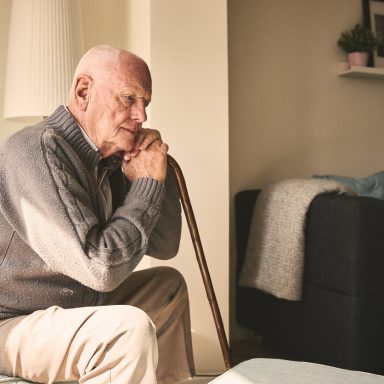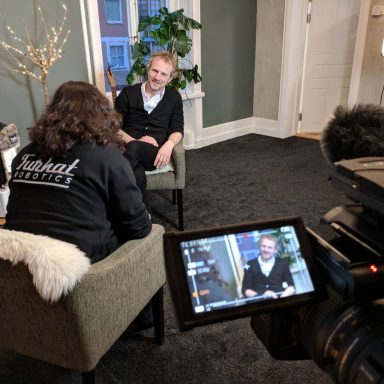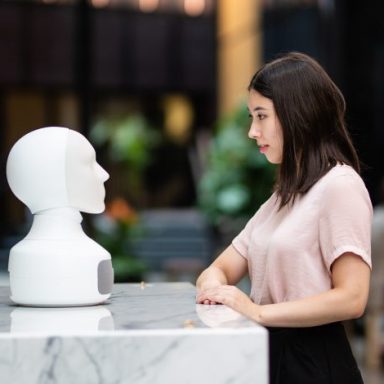Spending our days thinking about and building robots, it is natural for us at Furhat Robotics to consider what social robots could do for healthcare, both during the COVID-19 pandemic and the new “normal” that will sooner or later arrive. We have already done exciting work on PETRA (Prescreening Experience Through Robot Assessment) together with global pharmaceutical giant Merck, exploring how a robot can increase awareness and early detection of common, yet underdiagnosed, diseases.
But what about relieving the situation within hospitals and especially at primary or urgent care, where patients walk in unscheduled seeking help, comfort and attention, whereas the medical staff are under high workload?
With close to 34 million COVID-19 cases worldwide (at the time of writing in early October 2020), a new Deloitte report describes how the healthcare workforce is suffering from both mental and physical exhaustion, and the backlog of healthcare procedures is growing every day, partly due to a fear of high-risk patients (or doctors) to meet in the physical world. An article in The Lancet furthermore indicates that front-line healthcare workers have increased risks of reporting a positive COVID-19 test compared with the general public. As we all very well know by now, there is a clear challenge to take responsibility both for the safety of patients and staff.
How social robots can help
Social robots such as Furhat are designed to interact with us through natural conversation, offering both verbal and non-verbal cues. This reduces the barrier to interact with technology, as no prior skills other than speech is required. If we look at the healthcare industry, there are several aspects that we view as particularly important.
- Reducing contagion
Due to the highly infectious nature of COVID-19, the use of social robots can help reduce contagion as it can step in where human-to-human interaction is risky. Protecting not only patients, but employees too, is of vital importance and social robots on the frontline reduces the risk of contracting and spreading the virus. - Reinforcement of COVID-19 guidelines
Social robots can also be used as a means to reinforce COVID-19 guidelines. Given current guidelines are relatively similar across the globe, social robots can assist in ensuring these rules are followed by automatically identifying if visitors are wearing a mask, or reminding people not to stand too close to one another.
- Reducing workload on over-stretched staff
A key aspect is of course to help execute some of the tasks currently performed by human staff, so that they get a more bearable worklife. Due to healthcare staff being under-resourced and over-worked, deploying social robots allows for more patients to be seen quickly, and initial information can be captured and stored to a patient’s profile prior to visiting a healthcare practitioner, thus saving valuable time in the appointment. - Personal one-on-one attention
Talking about one’s health is for many people a personal topic, and by using a social robot the emotional and social aspect of such an interaction can be kept intact. The feeling of judgement or embarrassment can be reduced when speaking with a social robot, as opposed to a fellow human. By integrating a robot with backend systems, a personalized experience can be provided for patients through access to medical history records for example.
What kind of use case could this translate to in practice? One example is to place a Furhat robot in a hospital or clinic, that can greet patients in different languages, register walk-ins, record medical history and measure basic vital signs as a way to both alleviate nurses and doctors of time-consuming routine tasks and provide immediate attention and comfort to the patient. Below you can find a link to a concept that explains more in detail how this could look like!
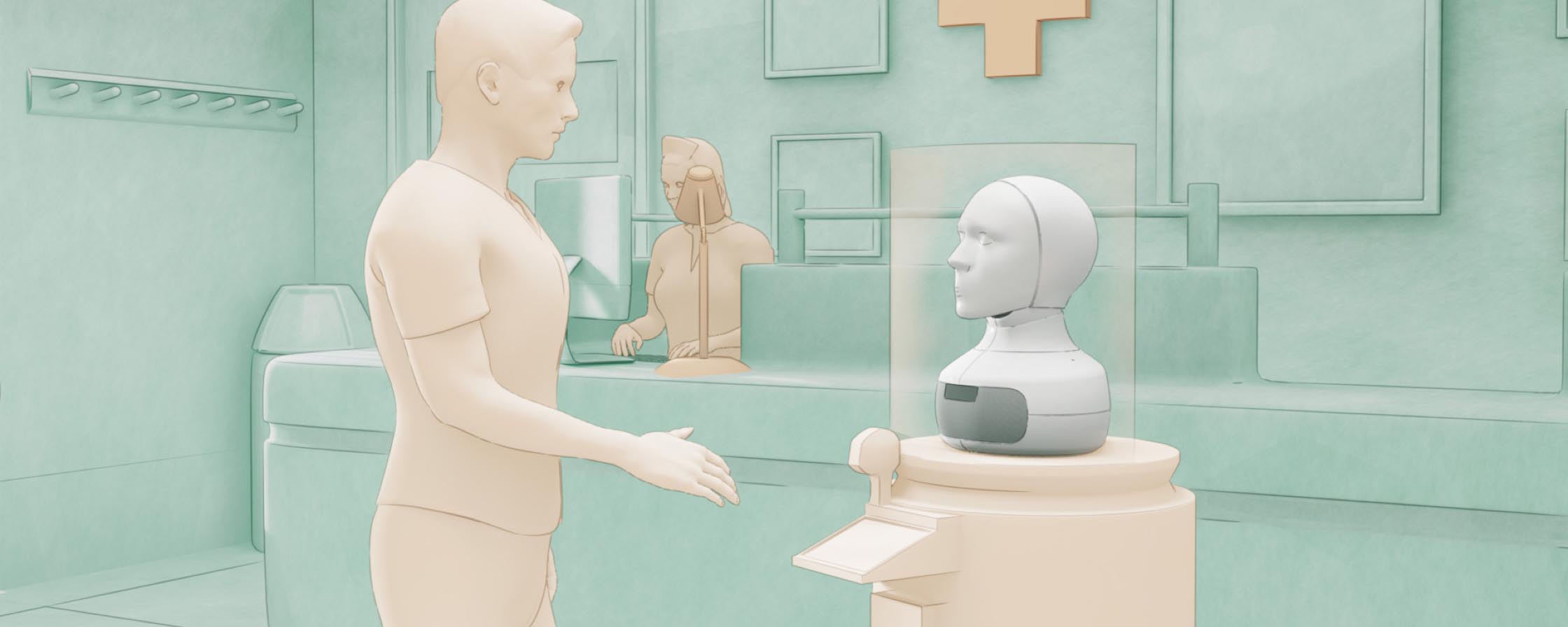
Social Robots in Healthcare
Can social robots relieve healthcare providers under pressure? See how Furhat can contribute to solving some of the industry’s pain points in this concept piece
We, and so many others, see now more than ever how social robots can and will be a major tool in helping to contribute to many of the challenges in healthcare we face today.
Are patients ready to speak to robots?
An important question to ask oneself is of course whether patients want to, or are ready, to speak to robots in a healthcare context. Could there be a risk that in the pursuit of time and cost efficiency, interactions and treatments are dehumanized?
Even though we passionately believe in what social robots can do for humanity, it would be naive not to accept that patients naturally want to speak with a well-trained and experienced human doctor, if there are any health issues that need to be resolved. The potentially ‘limited’ functions of a robot may frustrate patients that cannot get an answer out of the machine. This is why it is important to find a balance between where this technology can offer value to both patients and healthcare workers without impeding the experience or service, and choose the robot’s practical uses with care.
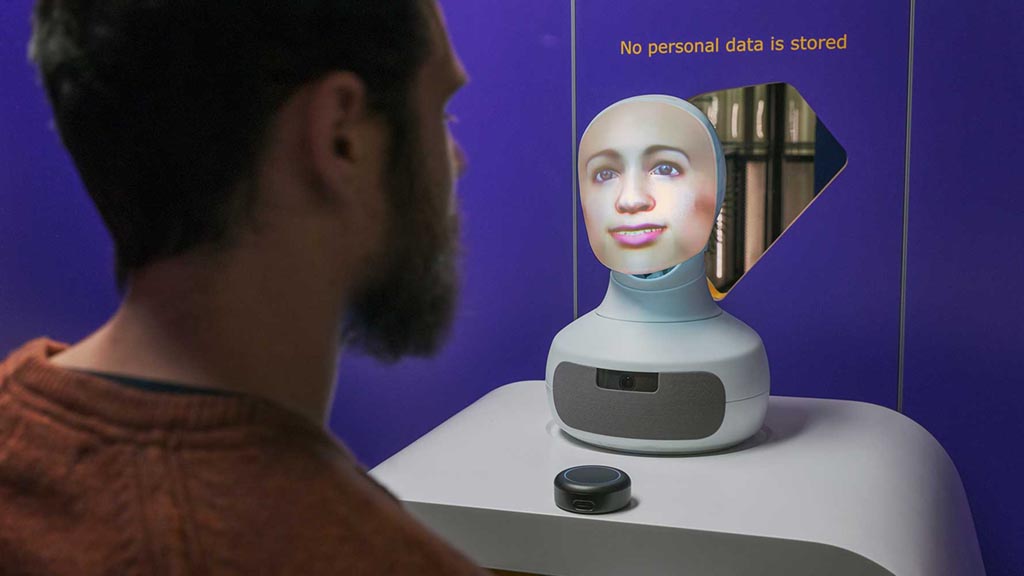
In light of the COVID-19 pandemic, we have seen a few of those well-chosen applications where robots contribute with what they are best at, such as the three robot nurses that joined the anti-virus fight in isolation wards in Shenyang, China, and one Wuhan hospital who enlisted the help of humanoid robots to offer exhausted healthcare workers relief after working around the clock since the pandemic began. The success of the project meant that robots eventually outnumbered human workers in one hospital ward.
This trend is also supported by a recent report from Research & Markets, where the healthcare sector is predicted to be one of the drivers of adoption of social robots; both due to social robots’ ability to engage people in both social and emotional dimensions and also given the growing expenditures within the sector that drives a need for cost-efficient solutions.
To summarize, social robots should not replace human medical staff.
There are however many situations characterized by routine-based tasks or situations that put healthcare workers’ health at risk, where robots could step in as an intermediary and offload an already overburdened group in our workforce. To be able to do that, and still maintain a human element in the process, that’s something that excites at least us at Furhat Robotics!
Are you keen to discuss more about robots and healthcare, or perhaps meet your first Furhat robot? We wish we could meet you physically, but in the meantime make sure to catch up on our healthcare webinar, or reserve a spot on our open demo sessions to see Furhat in action.
Watch our healthcare webinar
Our ‘Social Robots in Healthcare’ webinar took place on October 13th. Not to worry if you missed it, you can watch the recording at any time.


